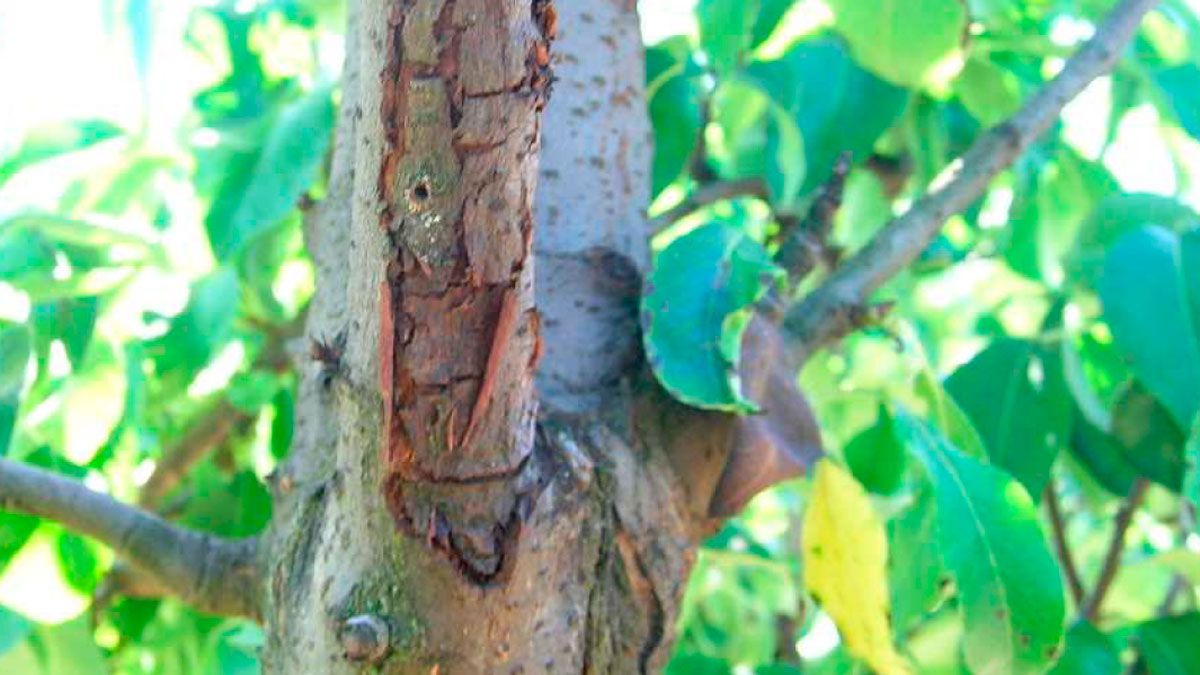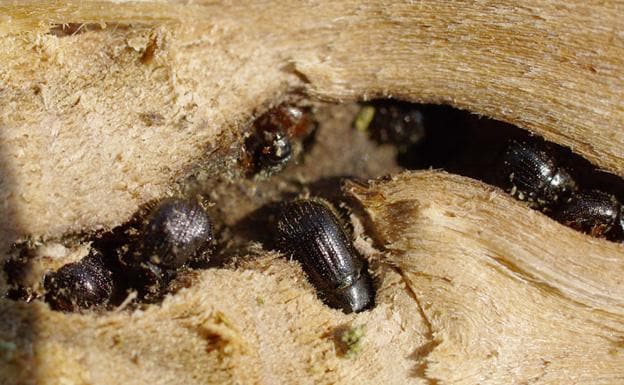
The Ambrosia Beetle
Xyleborus Glabratus
Pathogène :
Insect
Type:
Risque:
CRITICAL
Escarabajos




Descrição da doença
Xyleborus glabratus, known as the ambrosia beetle, is an invasive insect that mainly affects trees in the Lauraceae family, including avocado. Adults are small, approximately 2 mm in length, and dark brown to black. This beetle has a unique behavior of introducing symbiotic fungi into the trees it infests. Adult females bore into the wood of the host tree to create galleries where they lay their eggs. During this drilling, the females introduce spores of the fungus Raffaelea lauricola into the xylem vessels of the tree. The larvae, upon hatching, feed on the mycelial structures of the fungus within the galleries. Development from larva to adult can be completed in a few weeks under optimal temperature and humidity conditions, allowing multiple generations per year. Emerging females can fly and colonize new trees, perpetuating the spread of the fungus and infection.
Descrição do patógeno
The ragweed beetle causes a devastating disease in avocado due to the introduction of the fungus Raffaelea lauricola. This fungus causes clogging of the tree's vascular system, disrupting the flow of water and nutrients, leading to rapid decline of the plant.
- Sudden wilting of leaves and branches.
- Drying and premature leaf fall.
- Discoloration and necrosis of the bark in infected areas.
- Appearance of small holes in the trunk and branches, indicators of beetle activity.
- Rapid death of branches and, eventually, the entire tree.
- Presence of wood dust around the beetle's entry holes.
TEMPERATURA E UMIDADE
25°C - 30°C
60% - 80%
CAMINHOS DE TRANSMISSÃO</span
Flying adult beetles, movement of infected wood, contaminated tools, direct contact with infected trees
CONTROL
Tratamento químico
-
Tratamento biológico
-
Traitements biologiques
• BEAUVERIA BASSIANA (STRAIN ATCC 74040) 2.3% (2.3X10E7 VIABLE SPORES/ML) [OD] P/V
• BEAUVERIA BASSIANA (GHA STRAIN) 22% (4.4 x 10E10 CONIDIAS/G) [WP] P/P
Recomendações
- Regularly monitor trees to detect infestation symptoms early.
- Use pheromone traps to capture and monitor beetle populations.
- Implement biological controls by introducing natural enemies of the beetle.
- Avoid the movement of infected wood and plant material to prevent dispersion.
- Carry out sanitary pruning and eliminate infected trees appropriately.
- Improve cultural practices to keep trees vigorous and less susceptible to infestations.
- Apply chemical treatments in the early stage of infestation, following the recommendations for safe use.
- Promote species diversity in orchards to reduce susceptibility to specific pests.
TRAITEMENTS
Remèdes maison
There are no home treatments
Alliés naturels
Traitements chimiques
There are no treatments for this disease. Treatments are directed at the insect vectors that transmit it. See insect treatments.
RECOMMANDATIONS
- Check the back of the leaves frequently, especially in dry weather.
- Spray water on the leaves to increase humidity and prevent them from settling.
- Keep plants healthy with good watering and adequate light.
- If you see cobwebs or damage, clean the leaves with a damp cloth or pressurized water.
- Use potassium soap or neem oil every few days until they disappear.
Plantes répulsives
Rosemary, Dill, Coriander
PRODUITS RECOMMANDÉS
*Os tratamentos recomendados ainda são recomendações de acordo com os bancos de dados de autoridades e em nenhum momento substituem as diretrizes estabelecidas de acordo com a legislação de cada país
*Les produits présentés sont des recommandations et ne sont pas nos propres produits. En tant qu'associés Amazon, nous gagnons des revenus grâce aux achats de produits recommandés.





















